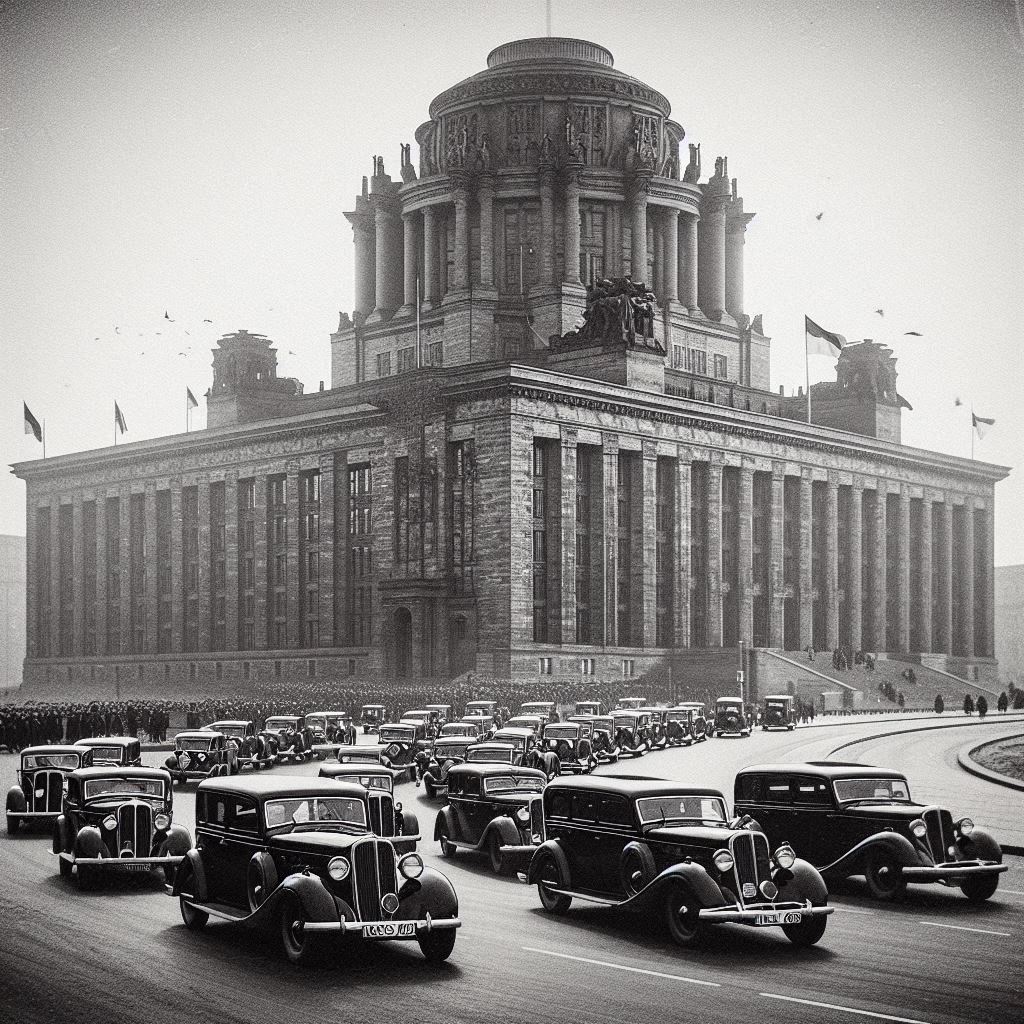Book review: “Hitler’s National Socialism” by Rainer Zitelmann (Part 1)
SUGGESTED



Quite a lot of influential people seem to think so. Over the past two years or so, there has been a flurry of books – some of them from high-profile, best-selling authors – warning us of a fascist renaissance, with titles such as How To Stop Fascism (Paul Mason), Sexual Revolution: Modern Fascism and the Feminist Fightback (Laurie Penny), How Fascism Works: The Politics of Us and Them (Jason Stanley), or Late Capitalist Fascism (Mikkel Bolt Rasmussen).
Since this renewed interest in fascism has been preceded by a revival of socialism as a popular mainstream ideology, it is perhaps unsurprising that most of the new self-declared “anti-fascists” see fascism through a Marxist lens. The orthodox Marxist perspective is that fascism is not a system or an ideology in its own right, but simply the most brutal form of capitalism. In this interpretation, liberal democracy is the form that capitalism takes when the ruling class feels secure in its position, and can afford a few superficial niceties, such as democratic elections and civil liberties. Fascism, on the other hand, is the form that capitalism takes when the ruling class feels under threat, and lashes out – it is capitalism with the gloves off.
This backdrop makes the (re-)publication of Rainer Zitelmann’s book Hitler’s National Socialism unintentionally timely and topical, because it offers, among other things, a much-needed corrective to the narrative peddled by the socialist mainstream.
But a bit of background first.
One problem with the Marxist perspective has always been that Hitler’s rhetoric was often stridently anti-capitalist. The way Marxists usually deal with this is by dismissing it as a mere rhetorical trick. They argue that when Hitler railed against capitalism, he never believed a word of it; he just tried to deceive working-class voters, who supported the Communist Party (KPD) or the Social Democrats (SPD). But actions speak louder than words: once in office, Hitler viciously persecuted socialists, and crushed independent trade unions. This, and the fact that some industrialists close to the regime profited massively, shows Hitler’s true colours as an out-and-out-capitalist, according to the Marxist interpretation.
This was already an issue before Hitler even came to power; more, it was already an issue when Hitler was still relatively unknown. Already in the early 1920s, Hitler’s left-wing opponents tried to brand him as just another lackey of the bourgeois-capitalist ruling class, a strategy which never worked particularly well for them.
Some people on the political Right, meanwhile, have been more willing to take the “socialism” in “national socialism” at face value, arguing that “national socialism” really was a variant of socialism. They point out that in actual practice, there were some striking similarities between Nazi Germany and the Soviet Union.
Yes, Hitler persecuted socialists – but so did Stalin, and so would future socialist regimes. It’s what those in control of socialist states do once they are in power: they kill other socialists. So in this interpretation, Hitler’s persecution of socialists becomes just another intra-socialist fight between rival factions.
This interpretation is not new either. Already in the Weimar Republic, Hitler’s conservative opponents tried to brand him as just another socialist rabble-rouser – initially with some success.
Then there’s the liberal interpretation, which sees fascism as meaningfully different from socialism, but which sees both as different versions of collectivism, which have more in common with each other than either has with laissez-faire individualism. They point out that while the Nazi economy was not state-run, it was heavily state-directed. Private ownership of the means of production existed on paper, but key parameters of the economy – prices, wages, investment decisions – were dictated by the state. If you notionally own a bike, but I get to decide when you can use it, where you can go with it, and with whom – to what extend is that bike truly “yours”?
Again, this interpretation is not new. The Austrian economists Ludwig von Mises and Friedrich von Hayek already characterised the Nazi economy in such terms when Hitler was still in power.
Arguments of this type continue to this day. Unfortunately, nowadays, the problem with them is that they usually involve a lot of opportunism and motivated reasoning. All sides try to highlight those aspects of Nazi ideology that are furthest away from their own worldview, but which bear some semblance to the worldview of their opponents. That way, all sides get to play the “Hitler card” against their opponents: “Hitler believed in X, Y and Z; you guys also believe in X, Y and Z, but me – I couldn’t be further away from X, Y and Z!”
But while we may all have an axe to grind, it is nonetheless possible to approach the issue in a scholarly way. Zitelmann’s book offers an extremely thorough analysis of National Socialist ideology, based, mostly, on Hitler’s own words, reconstructed from countess speeches, articles, and internal memos. In this review, I will concentrate on what the book has to say about the economics of National Socialism, although I should add that the book is broader than that: it also talks about where Hitler saw himself on the political spectrum, his view of history, of revolutions, etc.
Zitelmann’s approach, of course, raises an obvious question: to what extent can we take someone who was as masterful at deception as Hitler by his own word? How can we know what Hitler actually believed, and what he merely said for opportunistic, strategic reasons?
Zitelmann’s answer is to perform various “consistency checks”. Firstly, and perhaps most importantly, he compares what Hitler said in public to what he said behind closed doors, as recorded in minutes from internal meetings that were never intended to reach the public eye. Hitler’s public and private statements often diverge. For example, behind closed doors, Hitler sometimes criticised his allies, such as Mussolini, and later, the Spanish dictator Francisco Franco – people he would not have criticised publicly. By the same token, he was also more willing to show grudging respect for some of his (domestic and external) enemies.
But it is certainly not the case that Hitler was an anti-capitalist in public, and a capitalist in private, which is what we might expect if there were any truth in the Marxist interpretation.
Secondly, Zitelmann separates things Hitler only said during specific periods and/or to specific audiences from things he said throughout his political life, and to all audiences. Statements of the former variety are more likely to be tactically motivated, while the latter may come a lot closer to what he truly believed. For example, Hitler’s flirtations with agrarian romanticism were largely limited to a brief period in the late 1920s, which suggests that this may have been an attempt to woo rural voters.
His anti-capitalism, on the other hand, is a constant. It was there when he was the little-known leader of an electorally unsuccessful fringe party, it was there when he was at the height of his power, and it was still there when his empire was crumbling.
If Hitler’s anti-capitalism was merely a rhetorical trick to fool working-class voters sympathetic to SPD and KPD, we would expect it to wane after 1933, when those two parties were banned, their leaders arrested, executed, in exile or in hiding, and when he no longer had to win elections anyway. But that is not at all what we observe.
Thirdly, Zitelmann performs an internal consistency check, separating statements which contradict what Hitler said elsewhere from statements that fit into his overall worldview.
Zitelmann pays more attention to Hitler’s declared economic ideology than to the actual economic policies of the Third Reich. This seems counterintuitive at first, but it is defensible if we bear in mind that Hitler began to prepare for war almost immediately after consolidating his power. This was his overriding priority, which crowded out other objectives. Wartime is not the time for disruptive economic reforms.
Related to that, unlike his nemesis Stalin, Hitler needed the cooperation of parts of the old elites, especially in the military, but also in the business sector. He could not build up a completely new military from scratch, and neither could he, for that matter, build up a completely new economy from scratch. He had to make do with what was already there.
Thus, according to Zitelmann, we learn more about Hitler’s true intentions by focusing on his plans for the post-war economy, because that was when he thought he was going to have a free hand.
Having established the methodology for working out what “Hitlonomics” is – what about the content? What, if anything, is Hitlonomics?
Continue to Part 2




